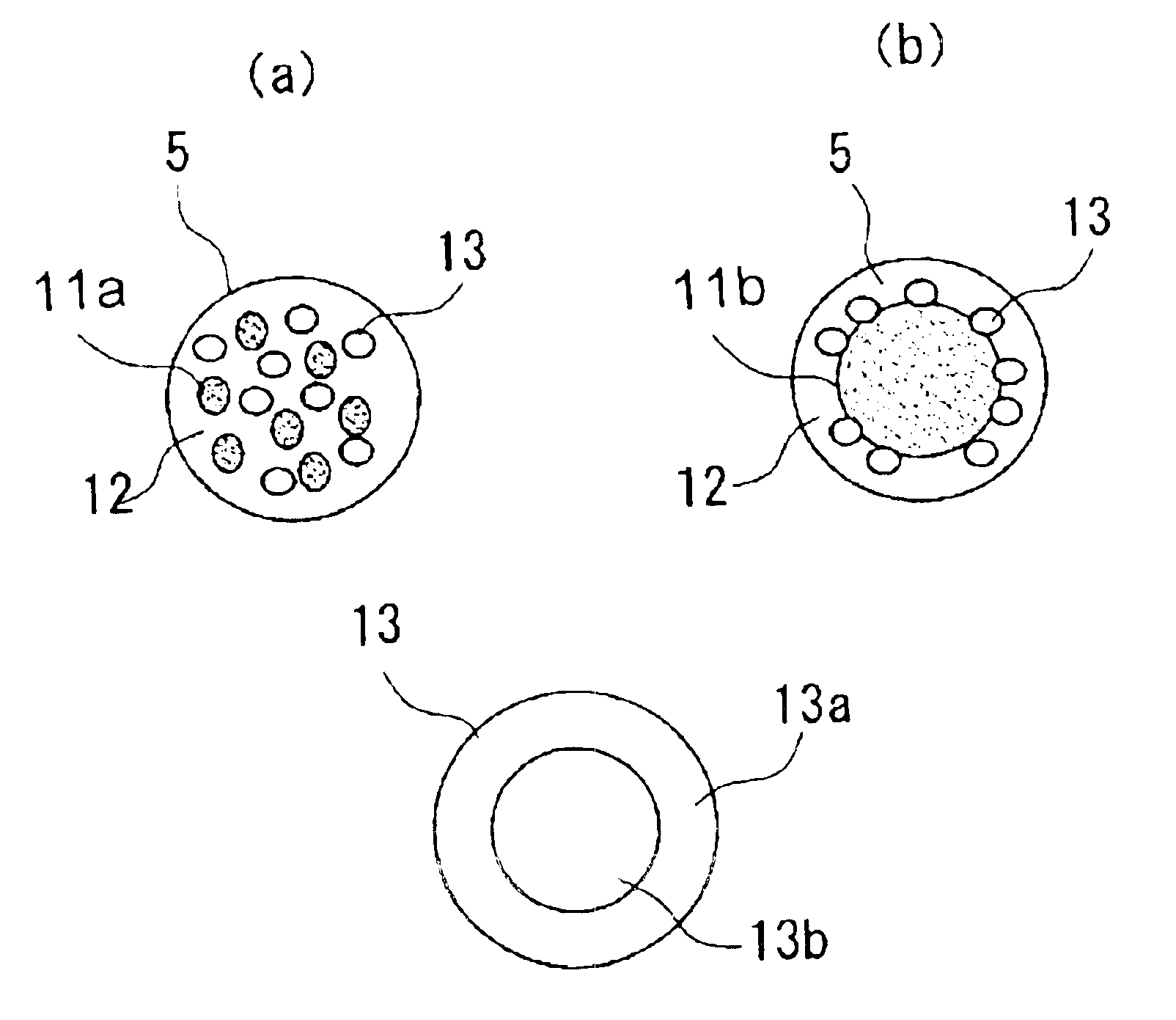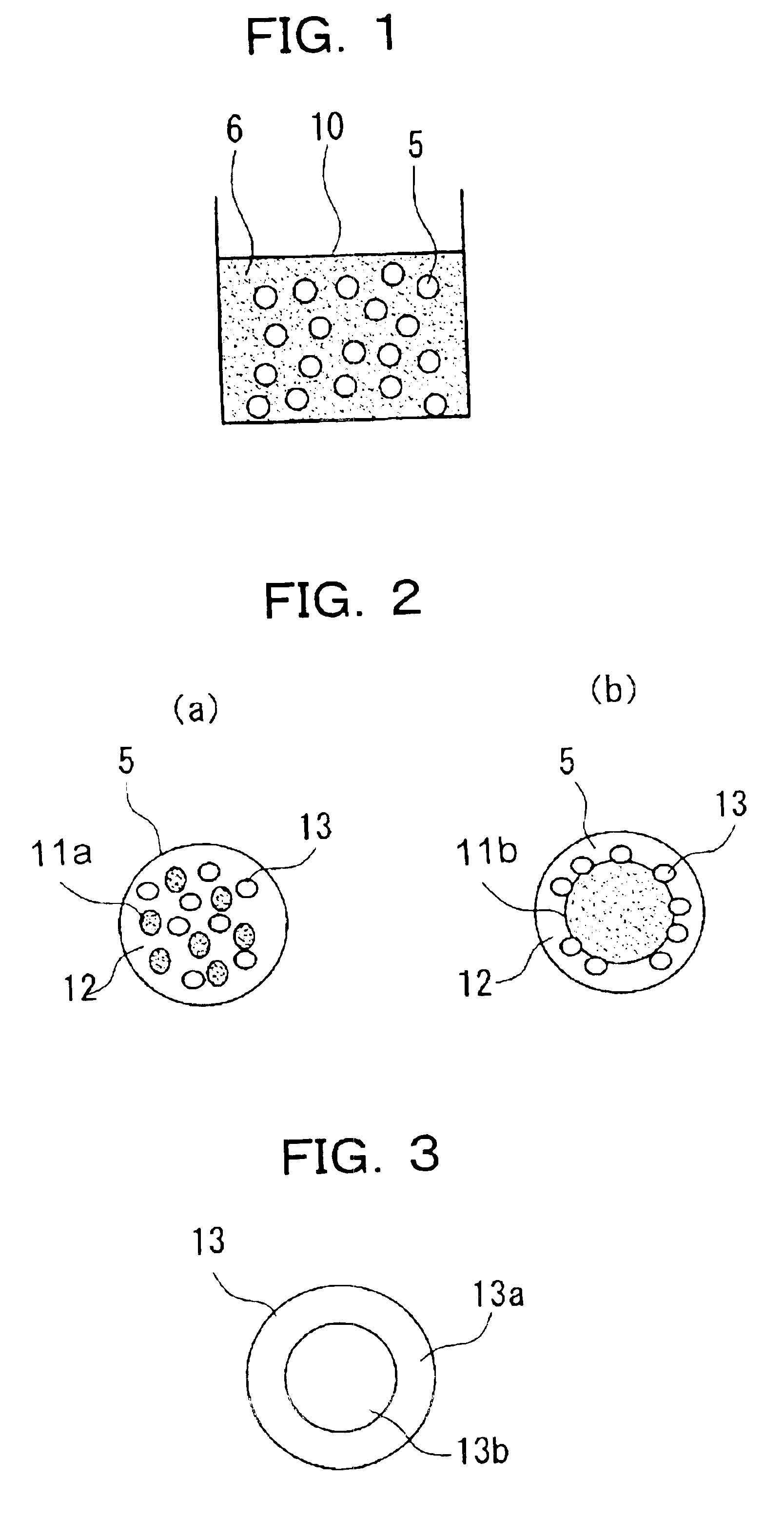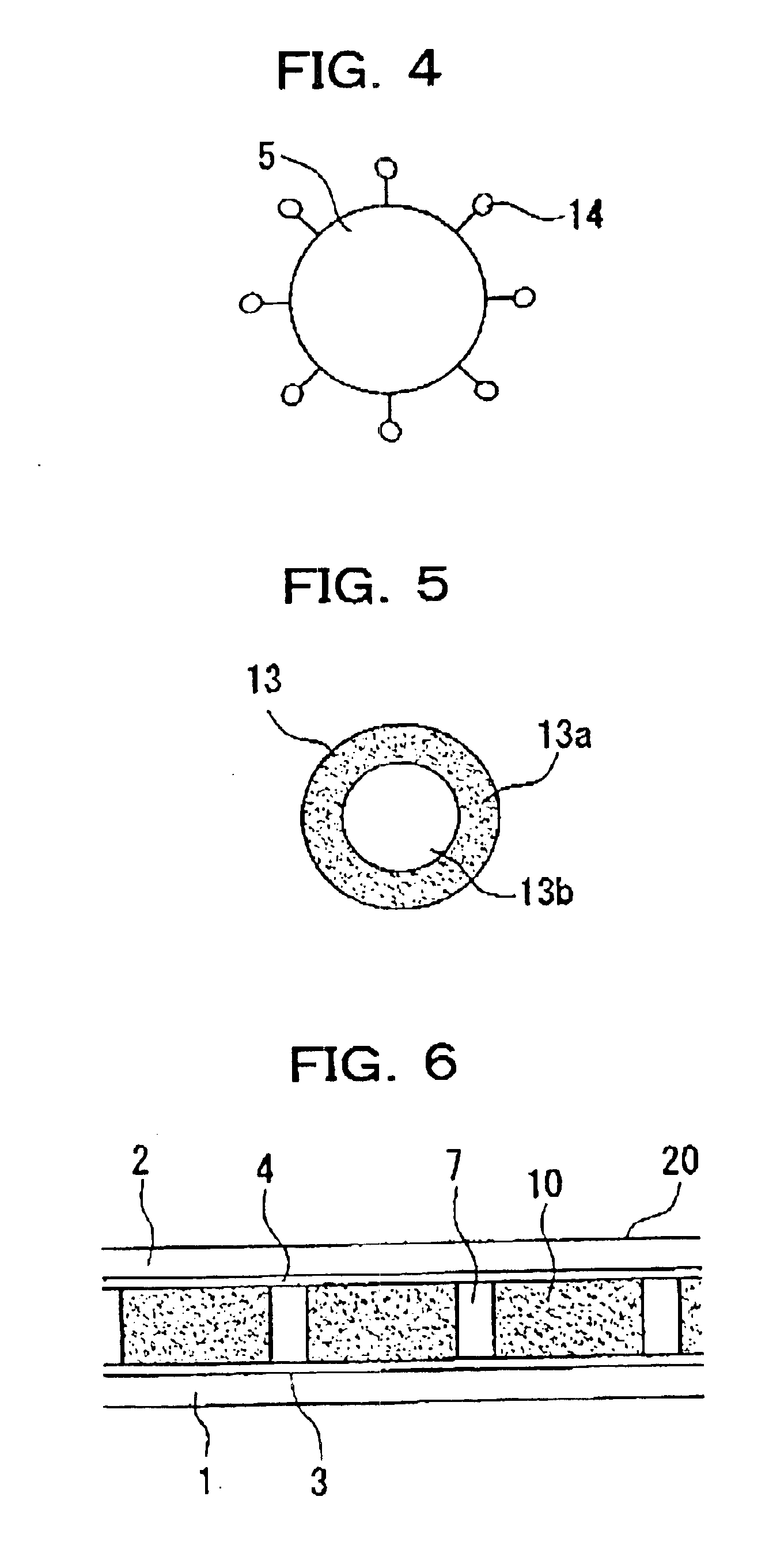Electrophoretic dispersion, electrophoretic device, and electronic device
a technology of electrophoretic devices and electrophoretic particles, applied in the direction of optics, instruments, optical elements, etc., can solve the problems of difficult to control the density of electrophoretic particles with preciseness, difficult to control the number and volume of cavities, and settle the electrophoretic particles
- Summary
- Abstract
- Description
- Claims
- Application Information
AI Technical Summary
Benefits of technology
Problems solved by technology
Method used
Image
Examples
first embodiment
An electrophoretic device 20 according to the present invention is shown in FIG. 6. The electrophoretic device 20 includes first and second substrates 1 and 2, spacers 7, a transparent electrode 4, an electrode 3, and an electrophoretic dispersion 10. The spacers 7 are disposed between the first and second substrates 1 and 2 so as to provide a predetermined distance therebetween. The second substrate 2 comprises, for example, a transparent material such as transparent glass or a transparent film. The transparent electrode 4 is disposed under the lower surface of the second substrate 2, the lower surface facing the first substrate 1. The transparent electrode 4 comprises, for example, indium tin oxide (ITO).
The first substrate 1 may not be transparent and may comprise, for example, glass or a film. The electrode 3 is disposed on the upper surface of the first substrate 1, the upper surface facing the second substrate 2. The electrode 3 may not be transparent and may comprise, for exa...
second embodiment
An electrophoretic device 20 according to the present invention is shown in FIG. 7. The electrophoretic device 20 of this embodiment includes first and second substrates 1 and 2, and microcapsules 40, disposed therebetween, containing the electrophoretic dispersion 10.
The microcapsules 40 may comprise gelatin, a urethane resin, a urea resin, or the like. The microcapsules 40 may be prepared by a known method such as an interfacial polymerization method, an in-situ polymerization method, a phase separation method, or a spray drying method. The microcapsules 40 preferably have even size in order to have superior display functions. The microcapsules 40 having even size can be obtained by a filtration method or a gravity separation method. The microcapsules 40 usually have a diameter of about 30 to 100 mm.
A microcapsule layer is disposed between the first and second substrates 1 and 2. The microcapsule layer may be formed according to the following procedure: the microcapsules 40 and a ...
PUM
| Property | Measurement | Unit |
|---|---|---|
| length | aaaaa | aaaaa |
| diameter | aaaaa | aaaaa |
| dielectric constant | aaaaa | aaaaa |
Abstract
Description
Claims
Application Information
 Login to View More
Login to View More - R&D
- Intellectual Property
- Life Sciences
- Materials
- Tech Scout
- Unparalleled Data Quality
- Higher Quality Content
- 60% Fewer Hallucinations
Browse by: Latest US Patents, China's latest patents, Technical Efficacy Thesaurus, Application Domain, Technology Topic, Popular Technical Reports.
© 2025 PatSnap. All rights reserved.Legal|Privacy policy|Modern Slavery Act Transparency Statement|Sitemap|About US| Contact US: help@patsnap.com



